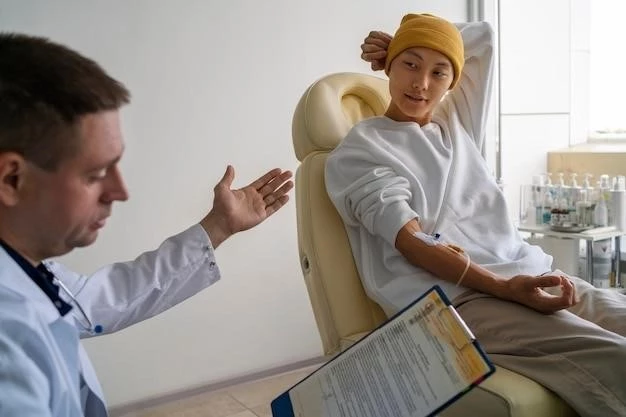Overview of Congenital Myopathy
Here, we will provide an insightful overview of congenital myopathy, covering key aspects in depth.
Understanding Congenital Myopathy
Congenital myopathy refers to a group of genetic muscle disorders typically present from birth or early childhood. It is characterized by muscle weakness, low muscle tone, and potential muscle wasting. Understanding the underlying genetic mutations and muscle fiber abnormalities is crucial in managing and treating this condition effectively. Individuals with congenital myopathy may experience difficulties with mobility, breathing, and daily activities. A multidisciplinary approach involving genetic testing, physical therapy, and assistive devices is often necessary to optimize the quality of life for those affected by congenital myopathy.
Symptoms and Signs of Congenital Myopathy
Learn about the diverse symptoms and signs that may indicate the presence of congenital myopathy.
Recognizing Symptoms
Recognizing the symptoms of congenital myopathy is essential for early detection and intervention. Common signs include muscle weakness, delayed motor milestones, poor muscle tone, respiratory issues, and potential joint contractures. Individuals with congenital myopathy may also experience fatigue, difficulty swallowing, and challenges with normal movement patterns. Understanding these symptoms can prompt timely medical evaluation, leading to a comprehensive diagnosis and personalized treatment plan tailored to manage the specific needs of the individual affected by congenital myopathy.
Causes and Risk Factors of Congenital Myopathy
Explore the intricate causes and associated risk factors contributing to congenital myopathy development.
Genetic Origins
Congenital myopathy is primarily rooted in genetic mutations affecting various muscle proteins, leading to impaired muscle function. These mutations can impact the structure and regulation of muscle fibers, resulting in muscle weakness and other associated symptoms. Inheritance patterns vary, with some forms of congenital myopathy being inherited in an autosomal dominant or recessive manner. Understanding the genetic origins of congenital myopathy is crucial for accurate diagnosis, genetic counseling, and devising personalized treatment strategies aimed at addressing the underlying genetic abnormalities contributing to the condition.
Diagnosis and Testing for Congenital Myopathy
Discover the comprehensive diagnostic approaches and testing methods utilized to identify congenital myopathy.
Evaluating Congenital Myopathy
Diagnosing congenital myopathy involves a thorough evaluation encompassing clinical assessments, genetic testing, muscle biopsies, and imaging studies. Clinicians examine muscle strength, tone, and reflexes, in addition to assessing potential symptoms such as respiratory difficulties and motor delays. Genetic tests help identify specific mutations responsible for the condition, guiding treatment decisions and family planning. Muscle biopsies provide insights into muscle fiber structure and function. Imaging techniques like MRI can visualize muscle abnormalities. A comprehensive evaluation is key to accurately diagnosing congenital myopathy and tailoring appropriate management strategies.
Treatment Options for Congenital Myopathy
Explore the diverse therapeutic interventions available for managing congenital myopathy effectively.
Managing Congenital Myopathy
Managing congenital myopathy involves a multidisciplinary approach aimed at addressing muscle weakness, improving mobility, and enhancing quality of life. Treatment strategies may include physical therapy to strengthen muscles and improve flexibility, respiratory therapy to support lung function, and orthopedic interventions to manage joint contractures. Assistive devices such as braces, wheelchairs, and communication aids can enhance independence. Medications may be prescribed to alleviate symptoms like pain or muscle stiffness. Regular monitoring and support from healthcare professionals are essential for optimizing outcomes and promoting overall well-being in individuals with congenital myopathy.
Prognosis and Outlook for Congenital Myopathy
Gain insights into the long-term prognosis and outlook for individuals affected by congenital myopathy.
Understanding the Future
Gaining a comprehensive understanding of the future implications of congenital myopathy is crucial for making informed decisions regarding treatment plans and lifestyle adjustments. While the condition may present lifelong challenges, advancements in medical research and therapeutic interventions offer hope for enhanced symptom management and improved quality of life. Individuals with congenital myopathy, along with their healthcare providers, can work collaboratively to navigate the evolving landscape of care, access support services, and remain up-to-date on emerging treatments. By staying informed and proactive, individuals can approach the future with resilience and optimism.

Lifestyle Management for Congenital Myopathy
Discover strategies to enhance quality of life and well-being while living with congenital myopathy.
Promoting Quality of Life
Enhancing the quality of life for individuals with congenital myopathy involves a holistic approach encompassing physical, emotional, and social aspects. Encouraging regular physical activity tailored to abilities, maintaining a balanced diet, and practicing relaxation techniques can improve overall well-being. Accessing support groups, counseling services, and adaptive resources can help manage emotional challenges and foster a sense of community. Creating a safe and accessible living environment, along with effective communication with healthcare providers, is essential for optimal care coordination. By prioritizing self-care, social connections, and adaptive strategies, individuals with congenital myopathy can enhance their quality of life and lead fulfilling lives.
Research and Developments in Congenital Myopathy
Explore the latest advancements and ongoing research efforts in the field of congenital myopathy.
Advancements in Treatment
Recent advancements in the treatment of congenital myopathy have focused on innovative therapeutic approaches aimed at addressing muscle weakness, improving mobility, and enhancing overall quality of life. Novel gene therapies, muscle-specific gene editing techniques, and targeted drug interventions show promise in targeting the root genetic causes of the condition. Additionally, advancements in physical therapy, assistive technology, and multidisciplinary care collaboration have led to more personalized and comprehensive treatment plans for individuals with congenital myopathy. Ongoing research continues to explore potential breakthroughs in treatment modalities, with a strong emphasis on improving long-term outcomes and functional abilities in those affected by this rare muscle disorder.
